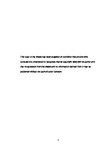Clinical Reasoning and Causal Attribution in Medical Diagnosis
| dc.contributor.supervisor | Letherby, Gayle | |
| dc.contributor.author | Adams, Linda | |
| dc.contributor.other | Faculty of Health | en_US |
| dc.date.accessioned | 2013-06-19T09:50:02Z | |
| dc.date.available | 2013-06-19T09:50:02Z | |
| dc.date.issued | 2013 | |
| dc.identifier | 752469 | en_US |
| dc.identifier.uri | http://hdl.handle.net/10026.1/1535 | |
| dc.description.abstract |
Forming a medical diagnosis is a complicated reasoning process undertaken by physicians. Although there has been much research focusing on clinical reasoning approaches, there is limited empirical evidence in relation to causal attribution in medical diagnosis. The research on which this thesis is based explored and examined the social process of medical diagnosis and provides an explanation of the clinical reasoning and causal attribution used by physicians. The research was undertaken in an Emergency Department within an acute hospital, the data were collected using mixed method approach including one to one semi-structured interviews with individual physicians; observation of their medical assessments of patients and secondary data analysis of the subsequent recorded medical notes. The study involved 202 patients and 26 physicians. The analysis of the physicians’ semi-structured interviews, shows how physicians describe the diagnostic step process and how they blend their clinical reasoning skills and professional judgment with evidence-based medicine. Physicians apply prior learning of taught biomedical and pathophysiological knowledge to question patients using pattern recognition of common signs and symptoms of disease. These findings are portrayed through taped narratives of the physician/patient interaction during the medical diagnostic process, which shows how physicians control the medical encounter. The analysis/interpretation of documentary evidence (recorded medical notes) provides an insight into the way in which physicians used the information gathered during the diagnostic step process. By using SPSS it was possible to cluster the cases (individual patients) into groups. This stage-ordered classification procedure demonstrated commonality amongst individual cases whilst highlighting the uniqueness of any cases. A pattern emerged of two groups of cases: Group 1 - comprised of patients with the presenting complaints of chest pain, shortness of breath, collapse, abdominal pain, per rectal bleed, nausea, vascular and neurological problems and Group 2 - comprised of patients presenting with trauma, mechanical falls, miscarriage/gynaecological problems, allergies/rashes and dental problems. Findings show that the clinical reasoning approaches used varied according to the complexity of the patient’s presenting complaint. The recorded medical notes for the patients in Group 1, were comprehensive and demonstrated a combined approach of hypothetic-deductive and probabilistic reasoning which enabled the physicians to deal with the degree of uncertainty that is inherent in medicine. The recorded process in the medical notes was shortened for the majority of patients in Group 2, and here the clinical reasoning approach used was found to deterministic. It is acknowledged, that this is not always the case. By using crisp set QCA it was possible to explore causal conditions consistent with Group 1. Further analysis led to examination of the link of causal conditions presented in the medical notes with the individual impression/working diagnosis made by physicians. | en_US |
| dc.description.sponsorship | Plymouth University | en_US |
| dc.language.iso | en | en_US |
| dc.publisher | University of Plymouth | en_US |
| dc.subject | Physicians | en_US |
| dc.subject | Clinical reasoning | |
| dc.subject | Causal attribution | |
| dc.subject | Medical diagnosis | |
| dc.subject | Emergency medicine | |
| dc.title | Clinical Reasoning and Causal Attribution in Medical Diagnosis | en_US |
| dc.type | Thesis | |
| plymouth.version | Full version | en_US |
| dc.identifier.doi | http://dx.doi.org/10.24382/3953 |
Files in this item
This item appears in the following Collection(s)
-
01 Research Theses Main Collection
Research Theses Main


